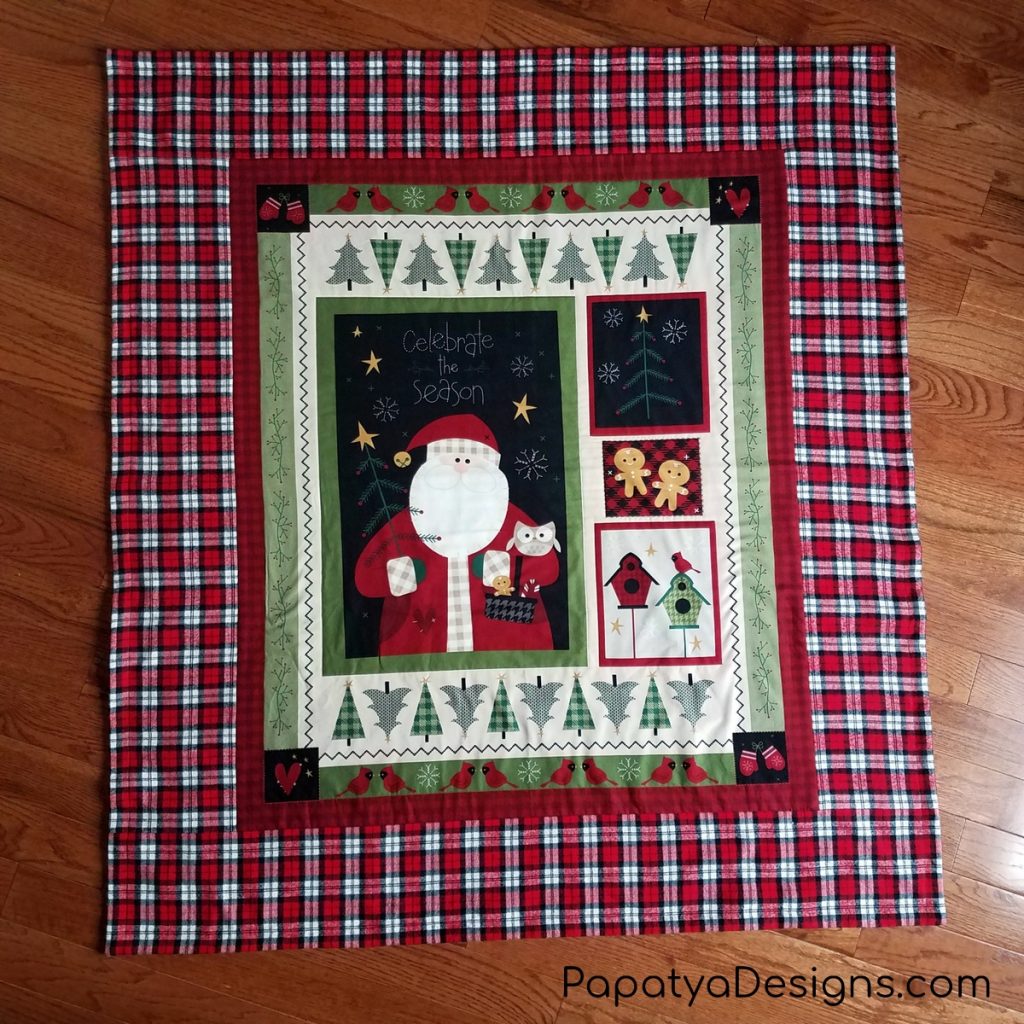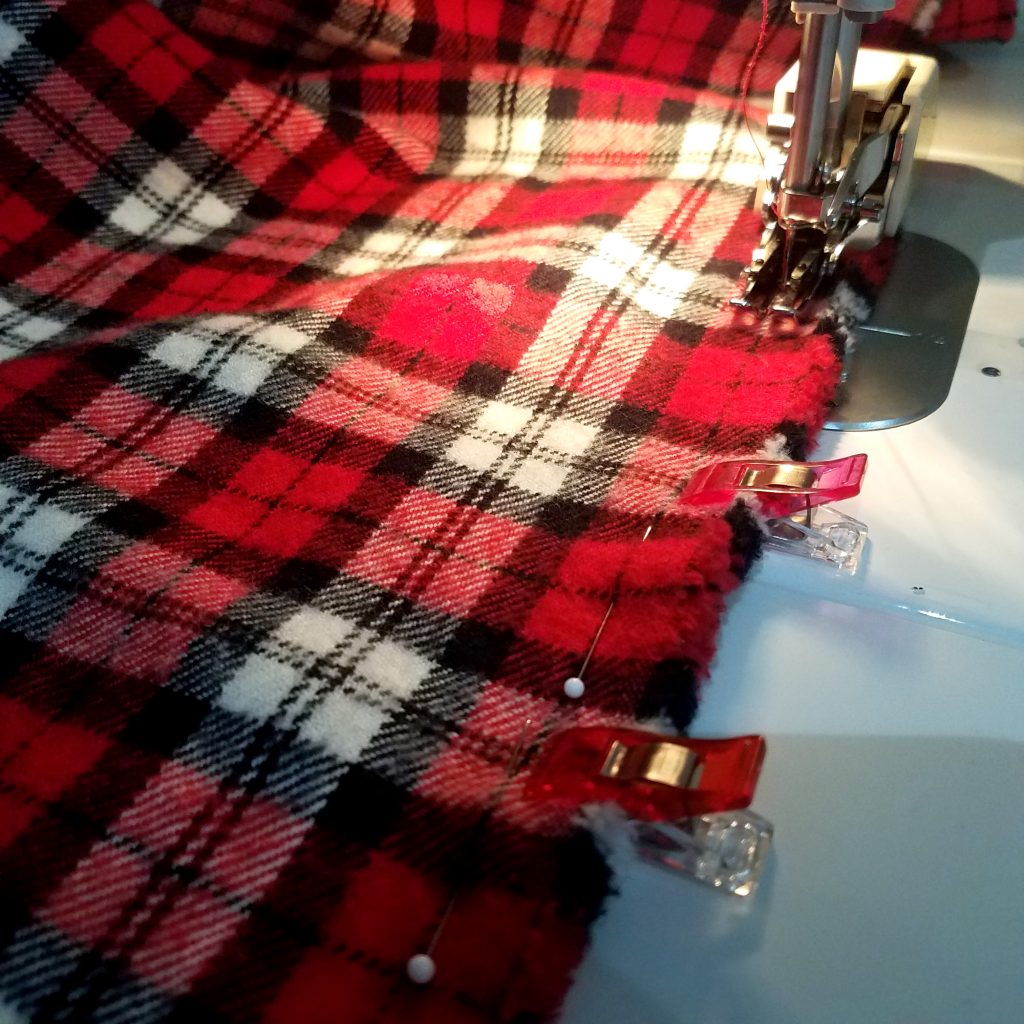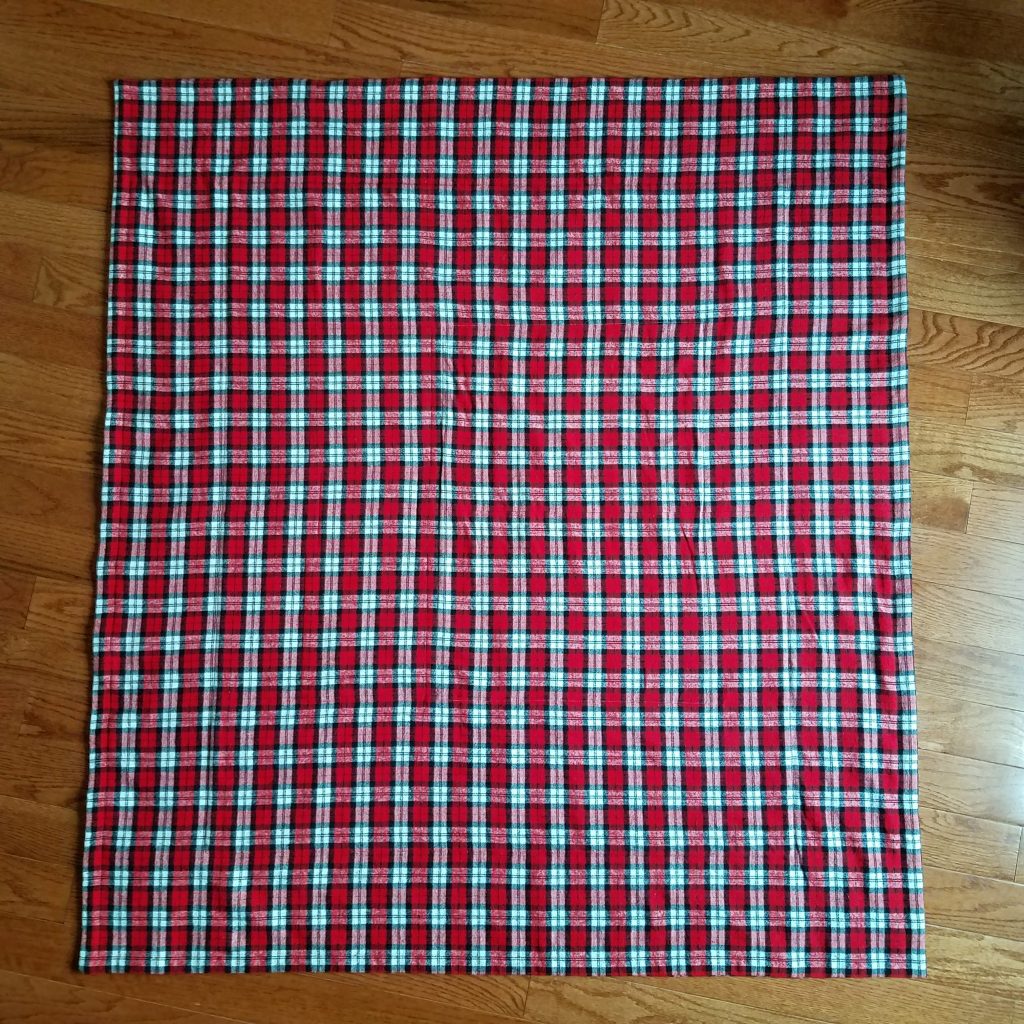If you haven’t read about my first project of 2019, check out my posts (here and here) about the panel quilt I made for myself using Robert Kaufman’s Highlander flannel. Here’s how the finished quilt looks:

I love getting under this quilt while watching TV. It’s very soft and warm. It was fairly easy to make considering that it consists largely of a panel, but getting the flannel borders aligned (as much as possible) took a bit longer than I expected. While working on the quilt, I made some notes about what worked best to ensure that the plaid pattern remained straight overall and matched at seams. That the plaid fabric was flannel introduced additional challenges. I make note of that down below as well.
Buy more fabric than you think you need.
If you want the pattern to match at seams, you will most likely need to shift cut fabric around to align the lines. How much extra fabric you need depends on the complexity of the pattern and the size of your project.
Funny fact, I actually did not follow this advice, and hence the pattern does not exactly match in some places. Having an additional quarter yard of fabric would have solved that problem.
If you’re working with flannel, buying extra yardage becomes all the more important, since flannel shrinks more than the average quilting cotton.
Pre-wash the fabric.
Pre-washing flannel is a must due to shrinkage, but that’s not the only reason! The pattern may get distorted and need to be straightened up prior to sewing. This is especially important when you’re dealing with plaid.
I recommend that you don’t dry the fabric thoroughly, but leave it slightly damp. This way, you can pull the fabric gently to straighten the plaid pattern before you start cutting the fabric.
Cut one layer of fabric at a time.
We all want to save time and cut multiple layers of fabric at once, but it’s nearly impossible to get the plaid to perfectly align on more than one layer. This is especially true with flannel, since it has a tendency to shift. If matching the pattern is important to you, take the extra time to cut the fabric one layer at a time.
Ditch the rotary cutter.
Speaking of taking the extra time to cut the fabric, I recommend that you use scissors instead of the good old reliable rotary cutter. Chances are the plaid pattern is not perfectly straight, especially if the print got distorted after washing. So, I recommend using scissors to cut gentler lines than you would get with the rotary cutter.
Use the plaid pattern to your advantage.
Using scissors has its own disadvantages. It’s usually much harder to get a straight cut with scissors than it is with a rotary cutter. In this case, the plaid pattern comes to the rescue. Make sure that the pattern is as straight as possible and follow the lines of the pattern to cut the fabric. Similarly, you can sew along the lines to make sure the pattern matches on pieced fabric.

Pin like your life depends on it.
Let me preface this with a more general statement: There is no shame in using pins. It’s not indicative of your shortcomings as a quilter or sewist. It’s not just what newbies do. And they certainly don’t give a prize to those who refuse to pin their pieces. I’ve seen so many quilters online boasting that they don’t use pins. That’s cool. What’s also cool are the quilters who use them.
To match any patterns or seams precisely, I like using as many pins as required. When working with flannel, which is known for shifting during sewing, I don’t shy away from using lots of pins. The end result is worth the effort, in my opinion.
Use a larger than usual seam.
This is important if you’re using flannel, which tends to fray more than quilting cotton. I like to use at least a half-inch seam allowance when working with flannel. In this case, you can use the plaid pattern to guide your seams. You can, for example, sew along a line in the pattern and then trim the seams if you have too much bulk.
Use a walking or even feed foot.
When both the top and the bottom fabric are fed at equal pace through the sewing machine, it’s much easier to match the pattern. This is especially important if you’re working with flannel.
Finger press.
I recommend that you stay away from the iron, especially the steam feature, until you’re done with the flannel quilt. Flannel can distort more easily than quilting cotton, and the plaid pattern would show any distortion caused by zealous pressing.
Choose your battles and let go of perfection.
This is perhaps true in any project. You have to know what’s most important to you — perfectly matched seams, the amount of energy you spend aligning patterns, time saved by using the rotary cutter or not using pins?
For me, I’d like to achieve maximum precision without feeling overwhelmed or frustrated. I undid a few stitches to better align the pattern here and there. It still wasn’t flawless, but I was okay with that. Besides, when I get under my warm and cozy quilt while watching my favorite show, I don’t seem to notice the imperfections.
Here is a picture of the pieced back of my quilt. Can you tell where the seam is? (If you can, don’t tell me! 🙂 )


